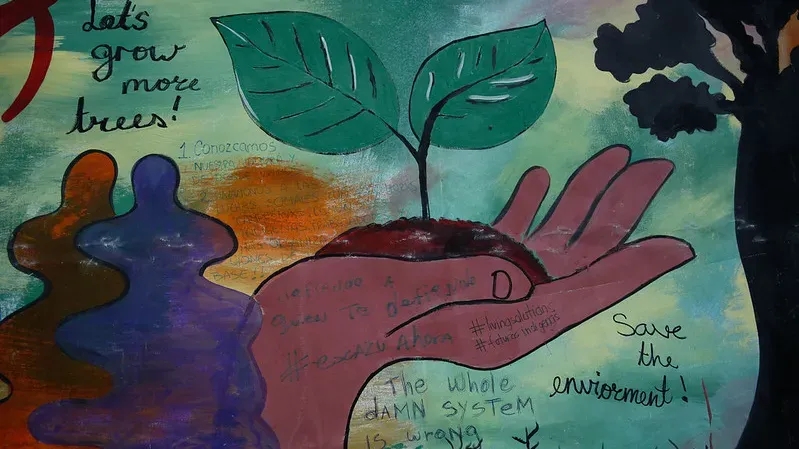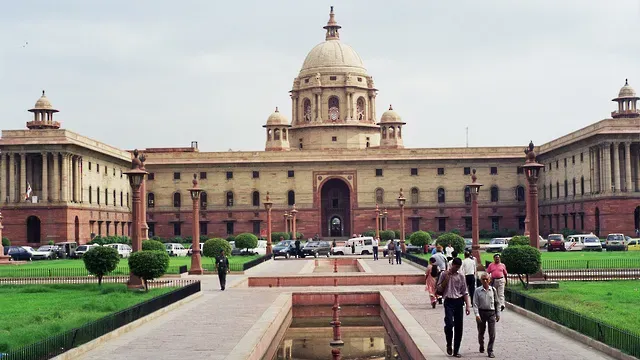COP27 action on rogue carbon credits threatens India's market lead
Weak regulations are flooding the voluntary carbon market with dodgy carbon credits. Negotiators are trying to fix that.

Welcome to today’s edition of Lights On, a newsletter that brings you the key stories and exclusive intel on energy and climate change in South Asia.
Today I am writing from Sharm El Sheikh in Egypt, host of this year’s UN Climate talks COP27. Subscribe now to receive updates from the most important climate meeting of the year:
It almost seems too good to be true: pay for every villager in India to be given a more efficient stove to cook on at home, and you would save enough carbon emissions to offset those of several major companies around the world.
These clean cookstove initiatives are among the many projects that have helped India become one of the world’s biggest providers of carbon credits, but like with many others they beg the question of whether the actual benefits to the planet are as good as they seem on paper.
India's lead
As well as asking countries to reduce their own emissions, the 2015 Paris Agreement was designed to help them cooperate towards mutual climate goals. After seven years, UN delegates gathered in the Egyptian town of Sharm El Sheikh are still at work to iron out the agreement’s Article 6.4, which will enshrine carbon pricing rules into international law.
Carbon credits are a well-known way to put a price on pollution - emitters can pay to support an intervention, anywhere in the world, which will remove an amount of greenhouse gases from the atmosphere equivalent to the carbon they have produced. This can be anything from planting trees to burning waste in a sustainable way. Currently, India hosts more than 1000 projects registered under the existing UN standard, the Clean Development Mechanism (CDM), and has recently announced it will roll out a national carbon market, riding on the booming appetite for domestically produced credits.
Double-counting emission savings
Globally, the voluntary carbon market – where parties choose to exchange carbon equivalent tokens to meet their climate goals – is estimated at around $2 billion. This may seem a minuscule amount compared to the $4.3 trillion of finance needed by 2030 to meet the world’s climate goals, but its value has quadrupled in just two years, a growth that may soon lead to meaningful impacts.
The principle behind a voluntary carbon market, known as carbon offsetting, is already widely adopted by polluting businesses worldwide to clean their climate report cards. But while the idea is simple, the reality is messy.
To start, the CDM, established by the Kyoto protocol, doesn’t address a crucial issue – when carbon credits are traded, who gets to claim climate brownie points for it? If both the buyer and sellers consider a project’s outcome as their own carbon reduction, these gains are counted twice – a problem that the Article 6.4 guidelines are trying to address.
At the best of times, working out the carbon value of any activity is not easy. For example, how can one be sure that a project would not have taken place anyway without the carbon credits? Take a solar farm in India, a country which is aggressively investing in solar to boost its clean energy development. These panels would probably be built anyway and the carbon credit incentive would be redundant. The same development would instead qualify in a country like Uganda, where renewables are still at an early stage.
What the open registry can reveal
A look at the project registry of the two main global verifiers, Verra and Gold Standard, shows how India has become the main destination for the production of carbon credits - with 911 and 449 projects at various stages of verification respectively, against a global total of 3170 for Verra and 2645 for Gold Standard. A sizeable number of these projects involve clean cookstoves and waste to energy technologies, all interventions that would not happen without the incentive of a carbon crediting scheme - a quality known as ‘additionality’.
Verra’s media relations manager Steve Zwick says that the verification body “applies various additionality tests determined through multiple rounds of expert review and public consultation” to ensure each project adds value on top of existing decarbonisation efforts.
Jamie Ballantyne, director of marketing and communication at Gold Standard, explains that additionality is assessed as a ‘snapshot in time’ at the beginning of the project. “If it’s assessed that the project would not happen without carbon finance then it will, by definition, be additional until it finishes,” he says in an email. The baselines against which a project is assessed will also be reviewed over time, he adds.
How dodgy credits come to pass
“Is [the project] looking only at mitigation, or does it include other developmental and social equity impacts?” asks Aman Srivastava, fellow with the Initiative on Climate, Energy, and the Environment at the non-profit Centre for Policy Research (CPR). He mentions reforestation programmes that often lead to the displacement of local communities, or include the plantation of non-native tree species that alter the ecosystem.
Certification bodies label the co-benefits each project is expected to bring, but the overall quality of a project is hard to monitor. Take the popular clean cookstove initiatives, which incentivise rural families to use less polluting fuels and switch to healthier options such as solar powered units - or ones that are simply more efficient. The technology is straightforward, and can be assessed easily, says a carbon market specialist with a leading renewable energy company who asked not to be identified. But whether it leads to long term benefits is another matter.
“I've been to villages, I've spoken with a lot of households and people who are there on the ground,” the expert says. “I've seen WhatsApp messages from their vendors saying come give us 10 Aadhaar [Indian ID cards] and I'll give you 10 cookstoves, without getting into the details of whether the cookstove is actually benefiting the families long term.”
A reputable verifying body will not assign carbon credits easily - every step of the project in question is vetted according to rigorous external methodologies, from the design stage to third party validation at various points in the process.
Yet much can and does go wrong.
Imperfect parameters
“You may find [that the criteria employed by respected verifiers] are very stringent, but often you’ll find that the methodologies [available to them] for monitoring, or to assess additionality, are not as stringent,” says Subrata Chakrabarty, senior manager with the Climate Program at WRI India. “Project developers set additionality criteria based on a methodology of their choice,” he explains. “In my experience people go for financial additionality, where they basically prove that the project cannot run without the finance that comes with carbon credits”.
This is the case of a major waste-to-energy project in Delhi, which after over a decade of operation remains at the centre of bitter controversies over its impacts on air quality. The plant has repeatedly been found to be in breach of pollution standards, yet it still receives finance under the UN’s CDM and now relies heavily on this money to stay in business.
This is not an isolated instance. Research has found that due to the way it is informally processed, India’s municipal waste isn’t suited to the technology, which needs dry and well-segregated material to produce energy and keep emissions down. Nonetheless, Verra’s registry for India features five new waste-to-energy projects at various stages of development. At the time of writing, Verra said they could not share a comment on this specific issue.
Inherent bias
Another reason why greenwashing slips through the cracks is that certifiers have an inherent interest in approving carbon credit schemes. “If the incentive of the verifier is to drum up more business,” says Navroz Dubash, a professor with CPR, “then if you are a verifier who makes things very hard, you won't get very much business. So there's a perverse incentive.”
Ballantyne says Gold Standard’s system is “built with a clear awareness of potential conflicts of interest”. He concedes that “no complex system can eradicate all conflicts of interest risks,” but it’s something that the verifier manages well. “If examples of such behaviour are uncovered, or if we identify [...] an over issuance,” he says, “Gold Standard ensures that the credits we issue always credibly represent what they claim. For example, we retired over two million credits in 2020 when we uncovered potential over issuance in one of our safe water supply methodologies.”
A new market under Article 6
Problems such as double counting or the approval of poor quality carbon credits are an inescapable facet of today’s voluntary carbon market – one that has been successfully used to engage the private sector in decarbonisation efforts, but has often led to greenwashing. What would change with the creation of a UN sanctioned carbon market, when the details of Article 6 are finalised?
“Once Article 6 is approved, this new carbon market will help countries achieve their NDCs,” a spokesman for a prominent NGO in the field told Lights On. “And while companies can use whichever market they prefer to reach their net zero targets, countries will only be allowed to use the one under Article 6.”
Because the new carbon market will be grounded in international law, he explains, countries will in turn create national legally binding frameworks to translate the global rules into national ones.
How stringent these new laws will be has been debated at COP27 and will likely be a matter of contention for months or even years to come. Whatever the outcome, a transition from a purely voluntary carbon market to an internationally regulated one is likely to rattle Indian investors in the sector, at least initially. Stakeholders expect the explosive growth in India’s carbon credit trading to slow down, but ultimately the sector may emerge stronger if it manages to harmonise with global standards and enter a much bigger marketplace.
That's all for today! If you enjoy this newsletter, please share it with a friend or two:



